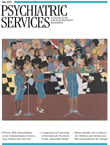Library of Dust
Library of Dust is a large book (13.50 by 17.25 inches) containing 80 color photographs, most of which are full-page images of corroding canisters, and essays by Michael Roth, president of Wesleyan University; Geoff Manaugh, author of BLDGBLOG; and Terry Toedtemeier, curator of photography at the Portland Art Museum in Oregon. The titles of these essays capture the spirit of the book: "Mineral Kinships," "The Soul Remains: A Mineralogical Account of the Remarkable Transformation of the Cremation Canisters at the Oregon State Hospital" (OSH), and "Graves of the Insane, Decorated."
After looking at remarkable, colorful photographs of canister after canister and at a few drab-colored, interior photographs of abandoned OSH buildings, the reader learns the history of the canisters. From 1913 to 1971, OSH cremated deceased patients' remains not claimed by next of kin. The state constructed a crematorium, exhumed and cremated all patients buried in the hospital cemetery since 1883, and placed the remains in 5,121 individual copper canisters sealed with solder of 90% lead and 10% tin. Over the years, they were stored in different locations on the hospital grounds, including in a vault that was continuously flooded for about 18 years. In 2007 the canisters were sealed in black plastic boxes and remain today at OSH.
The truly astounding colors of these canisters come from the years of leaching and mixing of copper, tin, lead, and elements of the cremated remains with the vault floodwaters. Most of the photographed canisters had lost their paper labels, but all canisters were stamped with a number that corresponds to a roster of the deceased.
While regarding the canisters that retained their labels, one shifts from viewing colorful canisters with patients' remains to contemplating patients' remains in colorful canisters. The surnames on the labeled canisters have worn off so the photographs do not breach confidentiality issues. To me, the most touching labeled canister is 566: "Baby Ma_, died March 7, 1924."
Maisel, in his afterword, states his objective in creating Library of Dust : "Through the creation of an archive of the dead and forgotten patients from the OSH, I am seeking to give those who lived with mental illness a presence that encourages their existence to be acknowledged in ways that were impossible during their lifetimes." Maisel has provided a fascinating, enduring memory of those lives. Look at and read the book in a quiet space where you can spend some uninterrupted moments with these memorials and the thoughts that they evoke.
The reviewer reports no competing interests.



